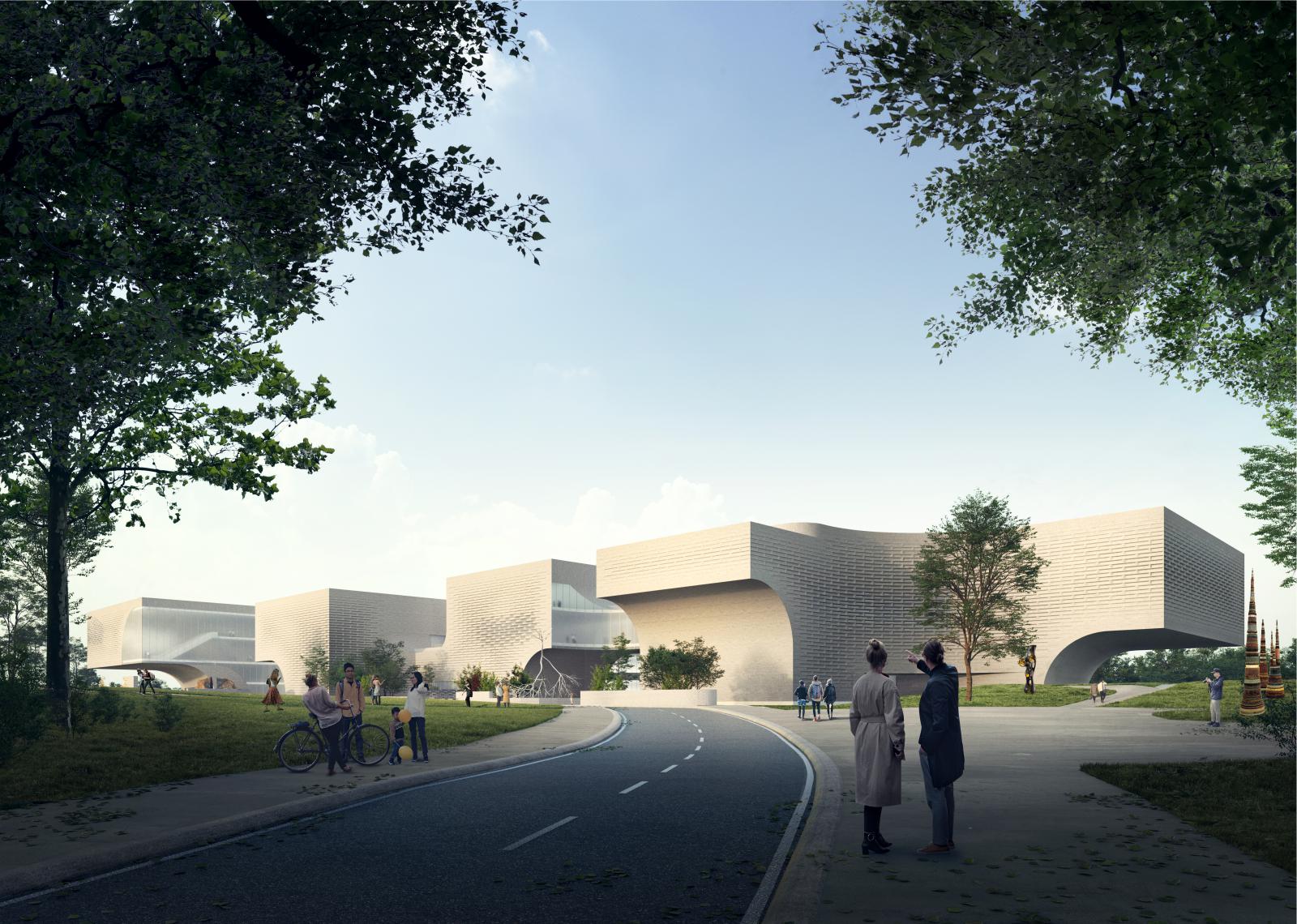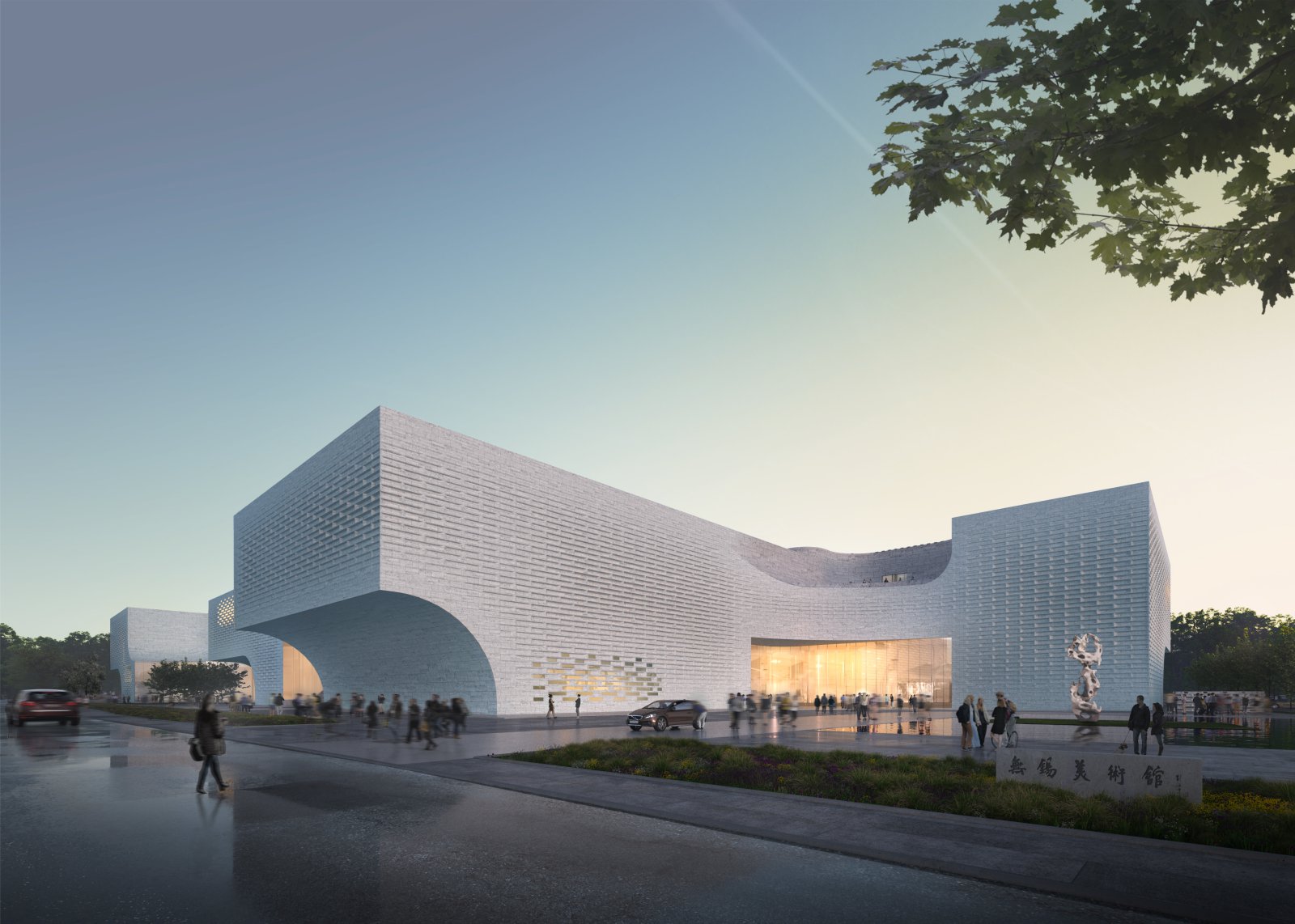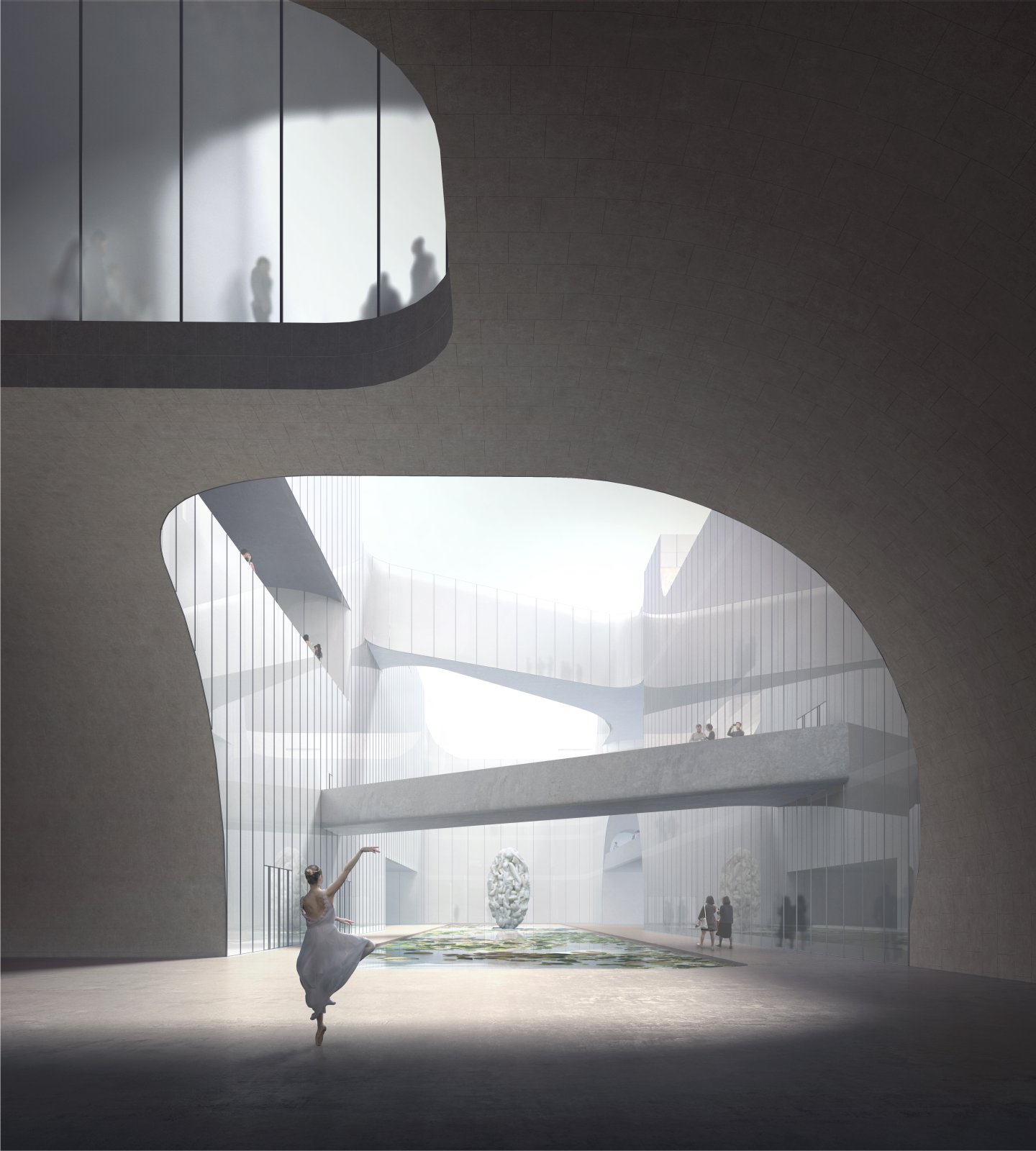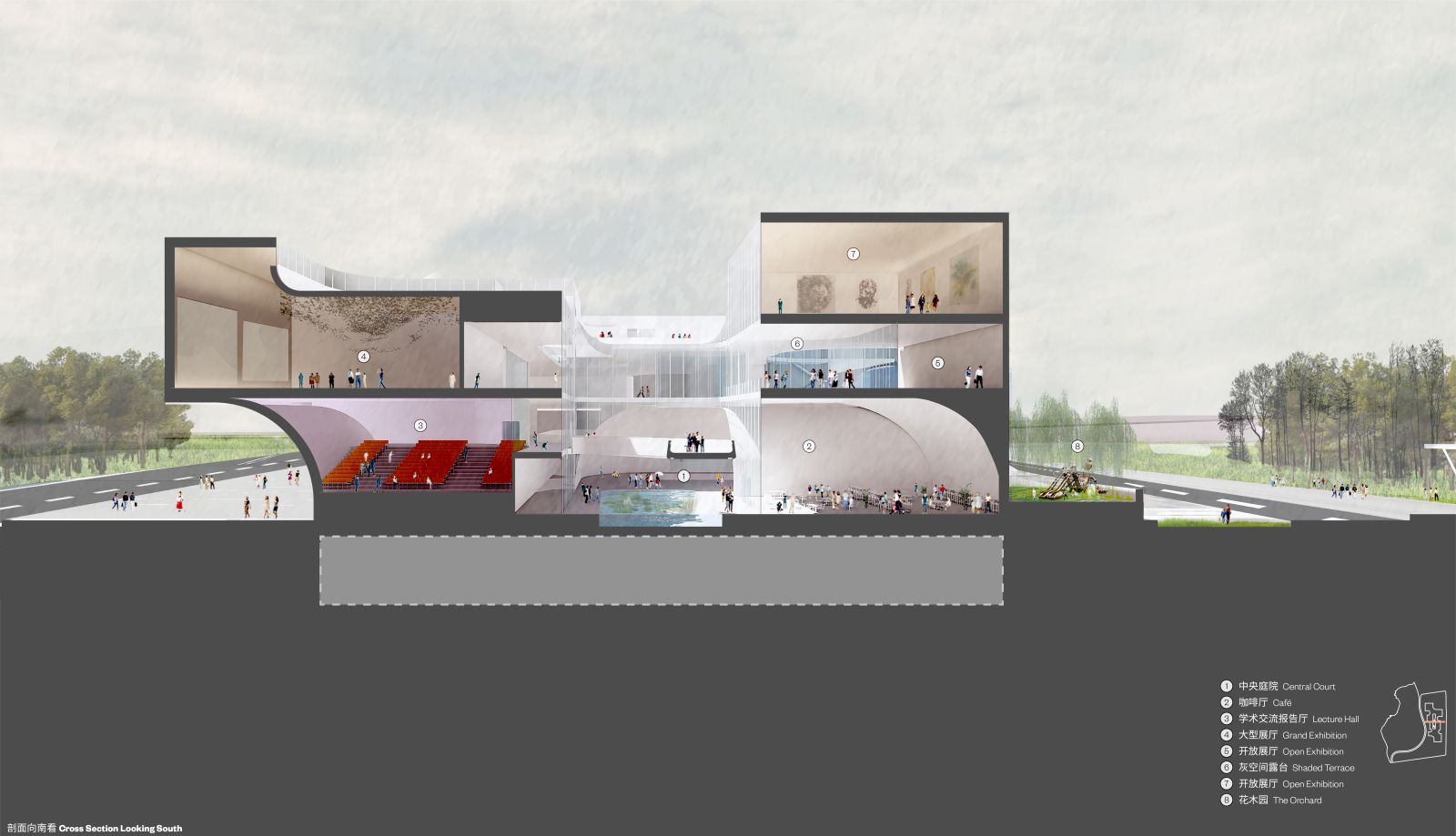Ennead Architects revealed its competition winning design for the Wuxi Art Museum in the historic port city of Wuxi, China. As a new center of art and culture in eastern China, the Wuxi Museum and Art Park builds on the cues of the Chinese garden tradition whose legacy has long been part of the region.
Set within Shangxianhe Wetland Park, the museum’s site design and architectural form closely connect and integrate the museum experience with the natural environment. The architecture of the Wuxi Art Museum is conceived as a metaphorical Taihu Scholar Stone – a contemplative and intricate spatial structure that invites one’s spirit in, but also sits quietly as a meditative object amidst the broader natural context.

Ennead worked with acclaimed landscape architecture firm West 8 to create an integrated relationship between the surrounding landscape and architecture, utilizing a rich composition of solid and void. Carved voids from the museum massing define distinct outdoor realms, creating an intimate relationship, intertwining framed views of outdoor art exhibits set within composed natural scenes.
West 8 created a curated path that meanders through a series of gardens, courtyards, and plazas with open lawns and playscapes. Flexible green space for an outdoor amphitheater allows visitors to enjoy art projections, movie screenings and performances. Throughout this sequence, signature sculptures and art installations will offer an immersive experience of discovery.

“Interlocked and intertwined with the porous museum experience of courtyards, galleries, thresholds and open-air ceilings and terraces, the architecture and the landscape share a language that extends the experience of the museum from the inside-out,” said Daniel Vasini, Creative Director at West 8.
“Inspired by Wuxi’s wetland ecology and regional tradition of water management and canals, we asked ourselves, how can we bring human experience to this rich heritage and embed the museum back within the context? As the landscape and architecture symbiotically expand and contract, the sequence of experiences invites the visitor to explore, and to be immersed within a layered system of sculpture gardens.”

At its main entry, the museum welcomes visitors with an embracing civic plaza which doubles as an exhibit opportunity for public art. A central court serves as a reference point for the museum, with a lily-filled waterscape for reflection and tranquility, visible from adjacent programs or footbridges crisscrossing at the upper galleries.
Like the outdoor Art Park, the interior experience of the Wuxi Museum is conceived as a varied sequence of infinite possibilities. Visitors are invited to find their own unique path through the museum – from the strategic integration of art to the ever-changing views out to the landscape.

From the carefully illuminated and flexible gallery spaces to the anchor of the central courtyard space ; and from the amenity spaces, which extend activity from indoors to outdoors, to the upper-level terraces that offer an expansive view over the Art Park.
Various types of lighting also contribute to the experience within the interior, using unique facade perforation and texture to introduce light as well as highlight the shaping of the limestone facade.


Perforations in the stone facade provide filtered light into the museum, and when combined with the slightly translucent moments of the glass curtain wall, the two types of openings create a presence that transforms from day to night. Additionally, the soft glow of the museum interior provides a subtle glimpse of the activity happening within.
During the day, the articulated limestone facade creates a textured expression and an intriguing interchange of smooth surfaces and of rough, porous areas. The perforated stone further links the architecture to the concept of the intricate spirit stones, where holes and crevices provide a level of interest and entrancement to the viewer. Source and images Courtesy of Ennead Architects.







